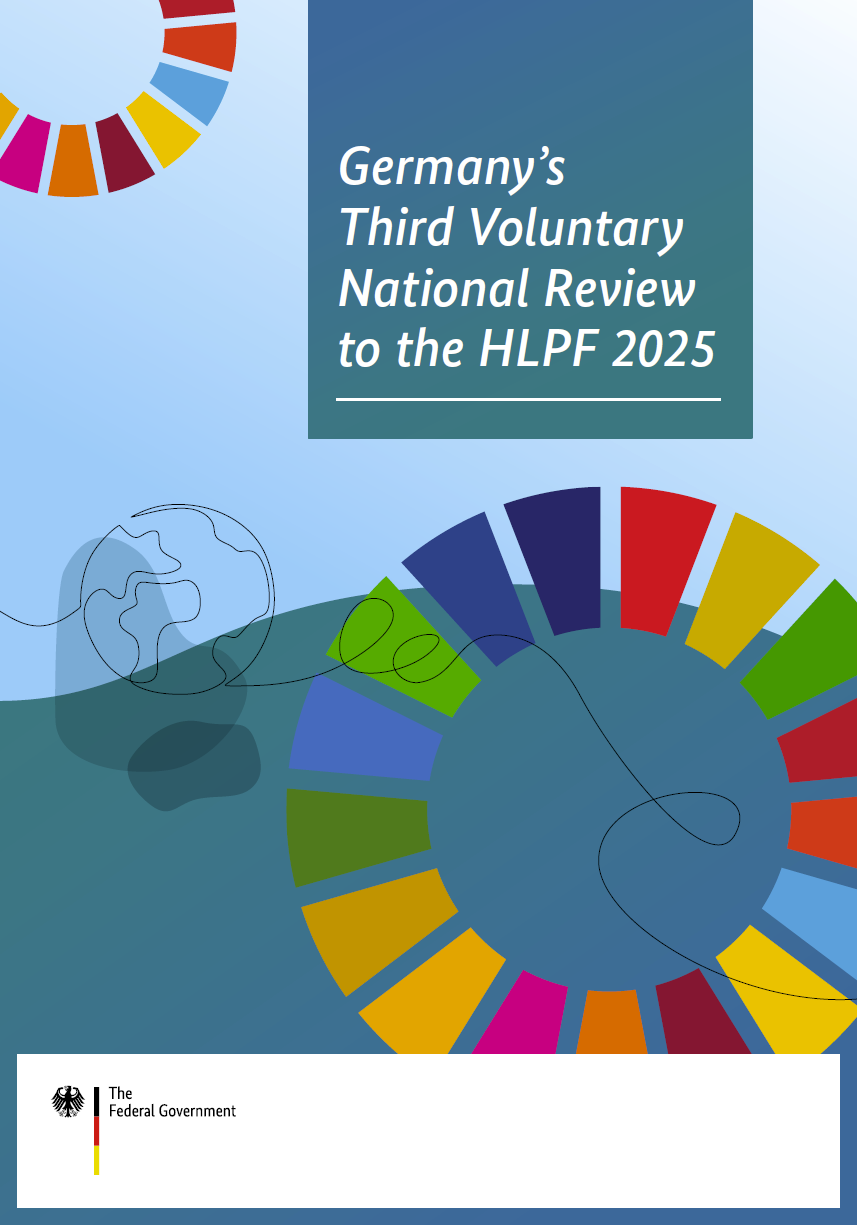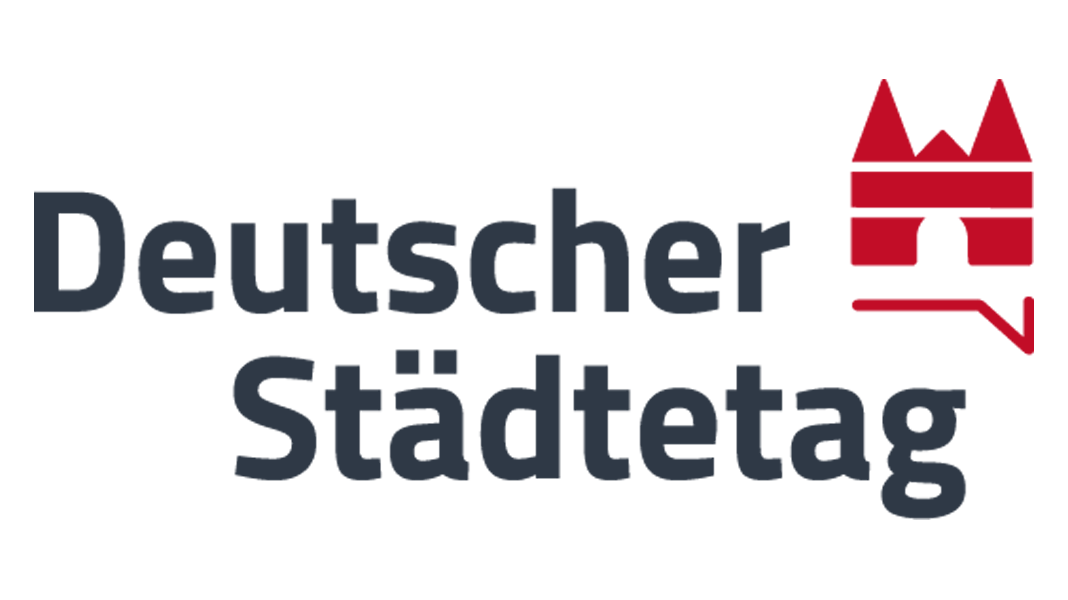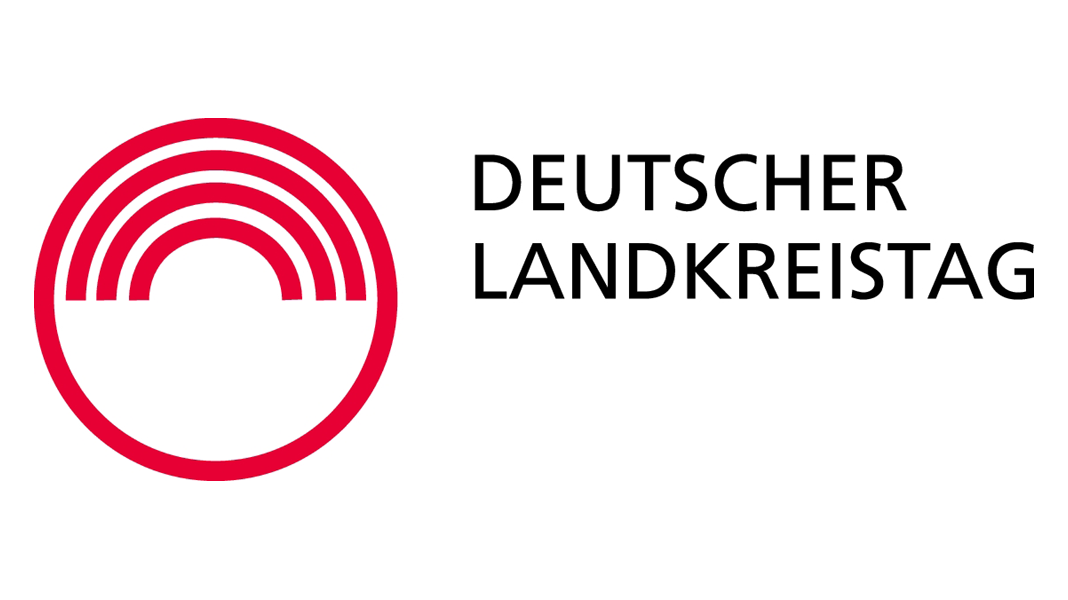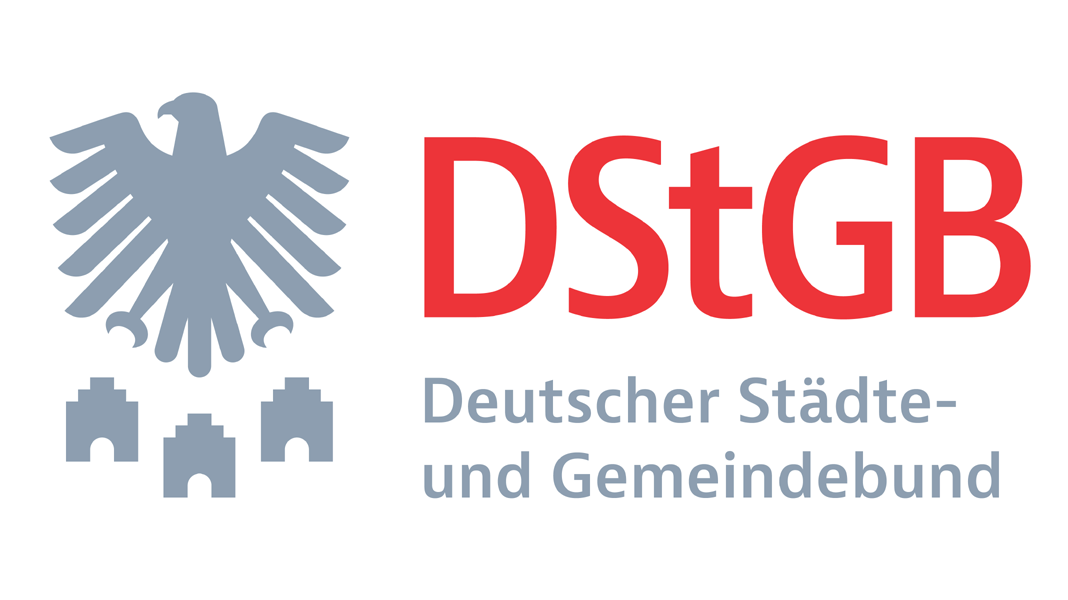VNR 2025 Contribution by the Federation of German Local Authority Associations
Municipal sustainability management: Municipalities have a very important role in the implementation of the 2030 Agenda. County districts, towns and cities, and local communities are central players here! Sustainability is a cross-cutting issue and affects all fields of action at the municipal level. Municipalities localise the 2030 Agenda in municipal sustainability strategies, underpinning the Goals with measures and plans for implementation. As a result, the SDGs are increasingly becoming a fixed item in municipal budgets. It is of key importance that sustainability goals are interlinked and it is also best that they are interlinked with an impact-oriented budget.
In signing the declaration “The 2030 Agenda for Sustainable Development: Building Sustainability at the Local Level (External link)”, 265 German municipalities have made a commitment to local and global sustainable development. More than 240 municipalities across Germany have already drawn up SDG reviews and sustainability strategies or implemented digital SDG monitoring. The number of municipal sustainability reports is also constantly growing. Around 100 municipalities have already published comprehensive sustainability reports. A suitable instrument for doing this is the Local Sustainability Reporting Framework (External link) (Berichtsrahmen Nachhaltige Kommune – BNK). This framework has so far been applied by around 30 municipalities. The version of the BNK further developed by the German Council for Sustainable Development in cooperation with the German Institute of Urban Affairs (Difu), the Bertelsmann Foundation and the Service Agency Communities in One World (SKEW) was published in October 2024 and is supported by the associations of local authorities, the LAG21 (Agenda 21 state working committee) and the KGSt (municipal association for administration management). Other municipalities use their own reporting formats. The SDG indicators for municipalities are a suitable basis for the data. The SDG portal (External link) is another option for drawing up standardised or individualised sustainability reports. Sustainability reports set out the status quo with regard to achieving the SDGs. In addition, they are a way for municipalities to gather details about the progress they have made in terms of sustainable development and steer the process. So far, 18 municipalities have already drafted Voluntary Local Reviews (External link) (VLRs) in accordance with international standards, reporting their progress in implementing the 17 SDGs to the United Nations. Municipalities regularly participate in international United Nations conferences (High-Level Political Forum, Habitat, World Urban Forum, Climate Summit) or OECD conferences, and discuss the best-possible implementation strategies with global institutions.
Global partnerships: Furthermore, there are more than 800 partnerships between German municipalities and municipalities from the Global South, including more than 100 climate and sustainability partnerships. SDG indicators are also increasingly being taken into account in the work of the partnerships. In 2024, the partner cities Bremen, Durban and Windhoek published their first joint SDG report with a focus on SDGs 6, 11, 13 and 17. Via platforms like “Connective Cities” or the “Club of Agenda 2030 municipalities”, the German associations of local authorities participate alongside associations and networks from 15 partner countries in a learning process for drafting and employing VLRs. German cities were a driving force in establishing the SDG Task Force of the city network Eurocities with more than 50 European cities as a learning platform and forum for the representation of their interests.
Sustainability as a task for the whole of society. The only way to successfully implement sustainable development is if local policymakers and local authorities, businesses at the local and regional levels, cultural entities and civil society all work together. Municipalities are the driving forces here for implementing the 2030 Agenda. Locally embedded initiatives contribute towards achieving the SDGs; in many municipalities, so-called sustainability councils bring diverse actors together. They are a way for the topic of sustainability to also be addressed as a task for the whole of society. Municipalities organise creative campaigns, competitions and exhibitions in order to strengthen public awareness of the SDGs. Furthermore, they embed sustainability in their city strategies and city budgets.
What has commitment to sustainability by municipalities achieved overall? The development of the SDG indicators for municipalities since the introduction of the 2030 Agenda has been a mixed bag. It is important to make a clear distinction between aspects where municipalities have a direct influence and aspects where decisions depend on the actions of national or sub-national legislators. This is clearest in the case of SDG 11, the communities goal, where a clear development trend for the well-known challenges of housing and private transport is not evident. Whilst positive trends can be seen in the expansion of renewable energies and infrastructure (SDGs 7 & 9) and in regard to industry and employment (SDG 8), the indicators in the sectors of health (SDG 3), reduced inequalities (SDG 10) and life on land (SDG 15) reveal old and new problems. There are also differences to be seen between various types of municipality: large cities generally saw better development in finances (SDG 16), which has a notable impact on the scope for sustainability activities. Greater progress on gender equality (SDG 5) was ultimately achieved by the municipalities in more rural areas. Small municipalities had more positive development in the education sector (SDG 4). Medium-sized cities and urban districts outside the large urban centres show the weakest dynamics by comparison across all SDGs. Growing municipalities did comparatively worse on poverty reduction (SDG 1). However, there is still a lack of current data available in order to determine trends for the whole spectrum of sustainability topics, especially in the following important transformation areas: climate protection and biodiversity conservation (SDGs 13, 14, 15), circular economy (SDG 12) and development cooperation (SDG 17).
Involvement of municipalities in the implementation of the 2030 Agenda
What can be done better? “Community tasks” are best tackled together. Right now, effective interlinking on many topics between the national, sub-national and municipal levels does not always occur. Being allocated tasks without resources leaves municipalities facing structural imbalances, with individual municipalities not always managing to find sustainable solutions in a worst case scenario. A fresh start is what is needed here! Public investment at the municipal level is the key for efficient and effective implementation of the 2030 Agenda. Municipalities need to receive the appropriate level of financial resources so that they are able to act. Municipal involvement is also necessary, because there are goal conflicts in the 2030 Agenda which are inherent to the system and must hence be balanced out at the municipal level. Goal conflicts result in contradictory actions being taken. Achieving one goal jeopardises progress on another goal. How can the infrastructure for mobility be improved or affordable housing be created with the least possible encroachment on available land? How can the share of renewables in the energy mix be increased without jeopardising the goal of affordable energy? These conflicts of goals must be ironed out at the municipal level. Municipalities must therefore be included in the continuation of the 2030 Agenda beyond process comprehensively and at an early stage.



